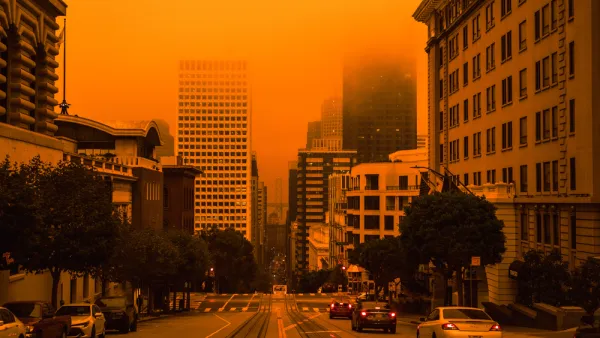Scientists are taking seriously proposals to artificially and massively change the Earth's ecosystems -- to "geoengineer" the planet -- to put the brakes on climate change.
"In the last two years, geoengineering has gone from the implausible purview of Dr. Evil-style kooks to a subject of serious scientific and political debate. In the U.K., the Royal Society, the country's de facto academy of science, has launched a major study and a parliamentary committee is preparing a report. In the U.S., the National Academy of Sciences is planning a similar probe. Last week, President Barack Obama's chief science adviser, John Holdren, revealed the administration has been discussing the options, with a focus on scattering-perhaps by plane, balloon, giant floating chimneys, or even artillery fire-massive quantities of sulphates or other aerosols in the upper atmosphere.
The idea is to mimic the effect of massive volcanic eruptions like Mount Pinatubo, which lowered global temperatures by 0.5° C after spewing out 18 million tonnes of SO2 in 1991. But what he didn't mention should be of particular concern to Canadians. The logical lab for such experiments-100,000 tanker plane flights a year per one estimate-would be the Arctic, where the cooling would be of the greatest benefit, restoring sea ice and turning down the global thermostat.
[T]he basic problem with geoengineering [is that] no one is quite sure what happens 'downstream' when you start messing with bits and pieces of the global climate. Would a colder Arctic mean more or less rain in the tropics? If you dissolved more CO2 in the seas, how would that effect marine life? Would the ecosystem be able to handle all that extra sulphur in the atmosphere? The cure could very well end up being worse than the disease."
FULL STORY: PLan B for Global Warming

Analysis: Cybertruck Fatality Rate Far Exceeds That of Ford Pinto
The Tesla Cybertruck was recalled seven times last year.

National Parks Layoffs Will Cause Communities to Lose Billions
Thousands of essential park workers were laid off this week, just before the busy spring break season.

Retro-silient?: America’s First “Eco-burb,” The Woodlands Turns 50
A master-planned community north of Houston offers lessons on green infrastructure and resilient design, but falls short of its founder’s lofty affordability and walkability goals.

Test News Post 1
This is a summary

Analysis: Cybertruck Fatality Rate Far Exceeds That of Ford Pinto
The Tesla Cybertruck was recalled seven times last year.

Test News Headline 46
Test for the image on the front page.
Urban Design for Planners 1: Software Tools
This six-course series explores essential urban design concepts using open source software and equips planners with the tools they need to participate fully in the urban design process.
Planning for Universal Design
Learn the tools for implementing Universal Design in planning regulations.
EMC Planning Group, Inc.
Planetizen
Planetizen
Mpact (formerly Rail~Volution)
Great Falls Development Authority, Inc.
HUDs Office of Policy Development and Research
NYU Wagner Graduate School of Public Service


























